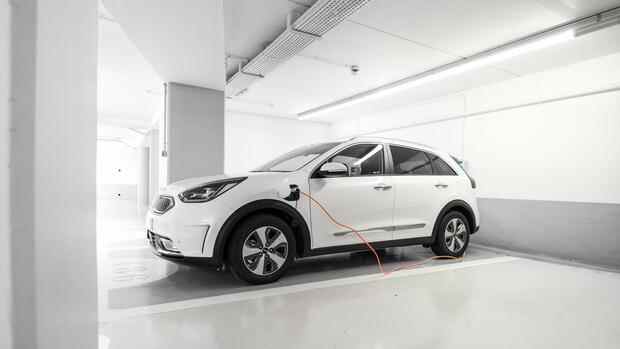(Photo: Kia Motors Germany GmbH)
The plug-in hybrid (PHEV) has never been more than a fix for the traditional auto industry. Manufacturers and suppliers were forced to build the vehicles with the two drives. Otherwise they would not have been able to comply with the CO2 limits in the European Union. Because reasonable electric cars, with which they could have reduced their CO2 fleet emissions, have been offered by Volkswagen, BMW and Daimler for just over a year.
So it’s no wonder that the German Association of the Automotive Industry (VDA) repeatedly emphasizes the importance of hybrid vehicles. It is essential for the drive turnaround and makes a contribution to climate protection. That’s a daring interpretation. Because the PHEV is essential above all for the industry, less for the customers or the environment.
Because for years car manufacturers and suppliers – especially in Germany – regarded pure electric vehicles as niche products. And now one of the country’s most important industries, which for decades has dictated the pace of development of the entire industry, is lagging behind.
With the PHEV, manufacturers and suppliers are buying time to make up for the deficit in purely battery-electric drives. However, the owners of these “car chimeras” will only realize in a few years that they bought the car manufacturers dearly for this time. Because their vehicles will then hardly be worth anything.
Top jobs of the day
Find the best jobs now and
be notified by email.
The reason: With PHEV, the industry is developing vehicles for which there are no long-term growth prospects, especially not outside of Europe. This is indicated by forecasts by the International Energy Agency (IEA).
The IEA calculates that by 2030 almost 80 million electric vehicles will be registered worldwide and around 44 million PHEV. Just over four million of these will be registered in the US, around 13 million in China and less than a million in India. Together less than 20 million hybrid vehicles.
Market depends on subsidies
In other words: There is no growth market for PHEV in many important car countries in the world. The hybrid vehicle is a political product. The EU’s last concession to the lobbying car manufacturers. Anyone who buys a PHEV in Germany today and drives it for eight years – that’s how long a vehicle is kept by a car driver on average – will hardly find a buyer in 2030 who will pay a reasonable price for this vehicle.
Car customers already seem to have an inkling of this. Last year, more purely electric cars were registered in Germany than plug-in hybrids. The same applies to Europe. And with every new charging station that is built, range anxiety decreases. This also gradually weakens the only reason to buy a PHEV.
And the core argument that people in rural areas mainly buy PHEVs because of the poorly developed charging infrastructure does not apply either. Because it is precisely there that they would put even more strain on the sparse charging infrastructure. The reason: PHEVs charge more slowly than purely electric cars. The more hybrid vehicles are registered, the more disastrous the impact on the public charging infrastructure. This means that even drivers outside of urban areas are potential PHEV buyers.
The PHEV still benefits from purchase premiums in Germany. Economics Minister Robert Habeck wants to reorganize the funding as early as next year. At the latest when the subsidies are abolished, the last incentive to buy a PHEV will also disappear.
More: Tesla at the forefront, VW ID.3 is losing ground – the ten most popular electric cars in Germany in 2021
